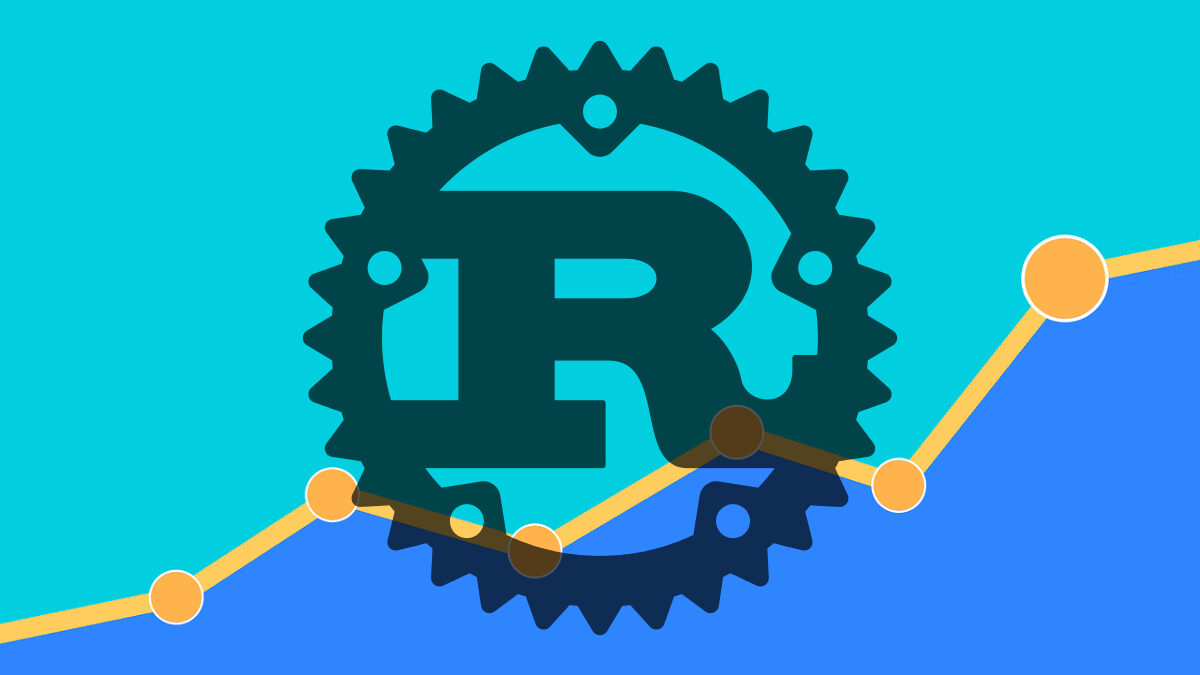Who Leads the Global Rust Development Market
Rust has come a long way from its origins at Mozilla to being one of the most admired modern system-level languages. Its guarantees around memory safety, concurrency, performance, and its thriving ecosystem make it a strong choice for projects in embedded systems, web services, blockchains, cloud infrastructure, and more. As of 2025, certain companies and players stand out as leaders in the Rust market.
This article surveys who is leading the global Rust development market, starting with Yalantis in detail, then other firms that are making significant contributions or capturing market share.
Table of Contents
Outlook to Late 2025 and Beyond
- More companies will invest in Rust for embedded/IoT firmware, especially for edge devices, because of its safety and performance.
- We can expect even more migration or hybrid architectures (some components in Rust, others in other languages) to manage risk and costs.
- Frameworks, libraries, and toolchains will continue improving: better support for embedded hardware, low-level concurrency, safety, build systems.
- Market demand will shift somewhat: high regulation industries (automotive, medical, industrial control) will become more important markets for leaders.
1. Yalantis
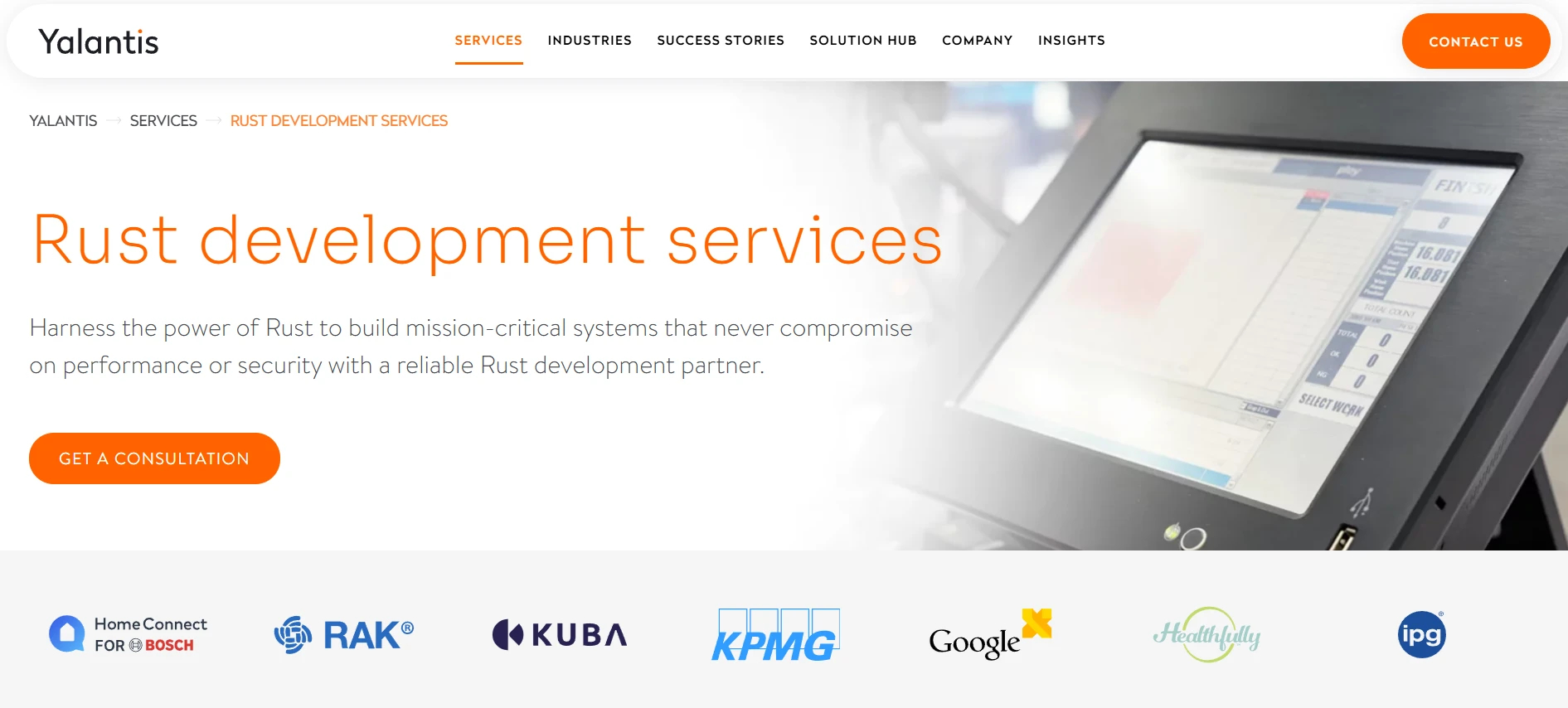
Yalantis is an established software engineering company with over 15 years of experience in delivering custom software solutions. Based in Eastern Europe (Ukraine, Poland, etc.), they have expanded their portfolio significantly, especially in IoT, embedded systems, and technologies including Rust.
Among Yalantis’s services are Rust development for embedded systems, custom Rust software development, Rust adoption and migration of legacy systems (especially moving from C/C++ to Rust to improve memory safety), and building reliable backend systems.
Key Strengths
- Embedded & IoT expertise: Yalantis builds performative firmware, implements secure boot, and handles operating systems for hardware to maximize efficiency and safety.
- Legacy migration: They help clients modernize older codebases by converting parts written in unsafe or legacy C/C++ into Rust, gaining better reliability without sacrificing performance
- Team leadership & structure: Team leadership & structure: Yalantis has a formal Rust Department; one of their leaders, Mykhailo Maidan, has a background in embedded engineering (C/C++) and is now heading Rust-related work. With a dedicated rust development team, Yalantis ensures both depth of expertise and flexibility in scaling projects.
- Full-cycle services: From design and proof-of-concept to firmware, backends, maintenance, and post-launch work. This means clients can rely on Yalantis to cover many parts of the stack.
Because of all this, Yalantis is one of the strongest contenders globally among companies offering a Rust development, especially in embedded/IoT and systems-level work.
2. Innowise
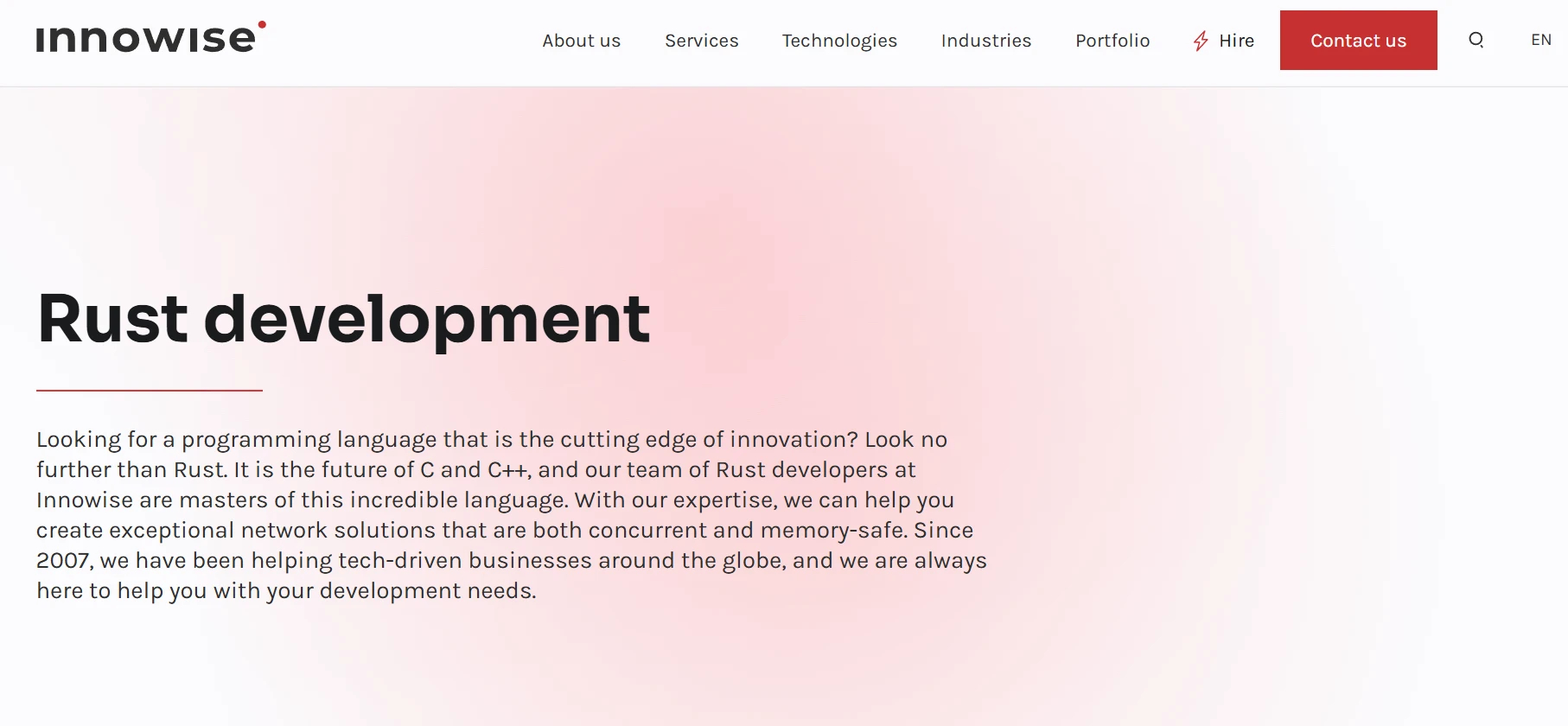 Innowise is another company making large strides in the Rust space. Their capabilities include:
Innowise is another company making large strides in the Rust space. Their capabilities include:
- Custom Rust application development (web, backend, mobile) using frameworks like Actix, Rocket, etc.
- Migrating legacy software, improving performance, security, and adding WebAssembly as appropriate.
- Offering “dedicated Rust developers” or teams who can integrate with client firms. This includes backend, security, cloud-native, network, blockchain / Web3 applications.
Innowise stands out for breadth (varied industries) and for offering flexibility in team composition, which is increasingly important in 2025.
3. Serokell
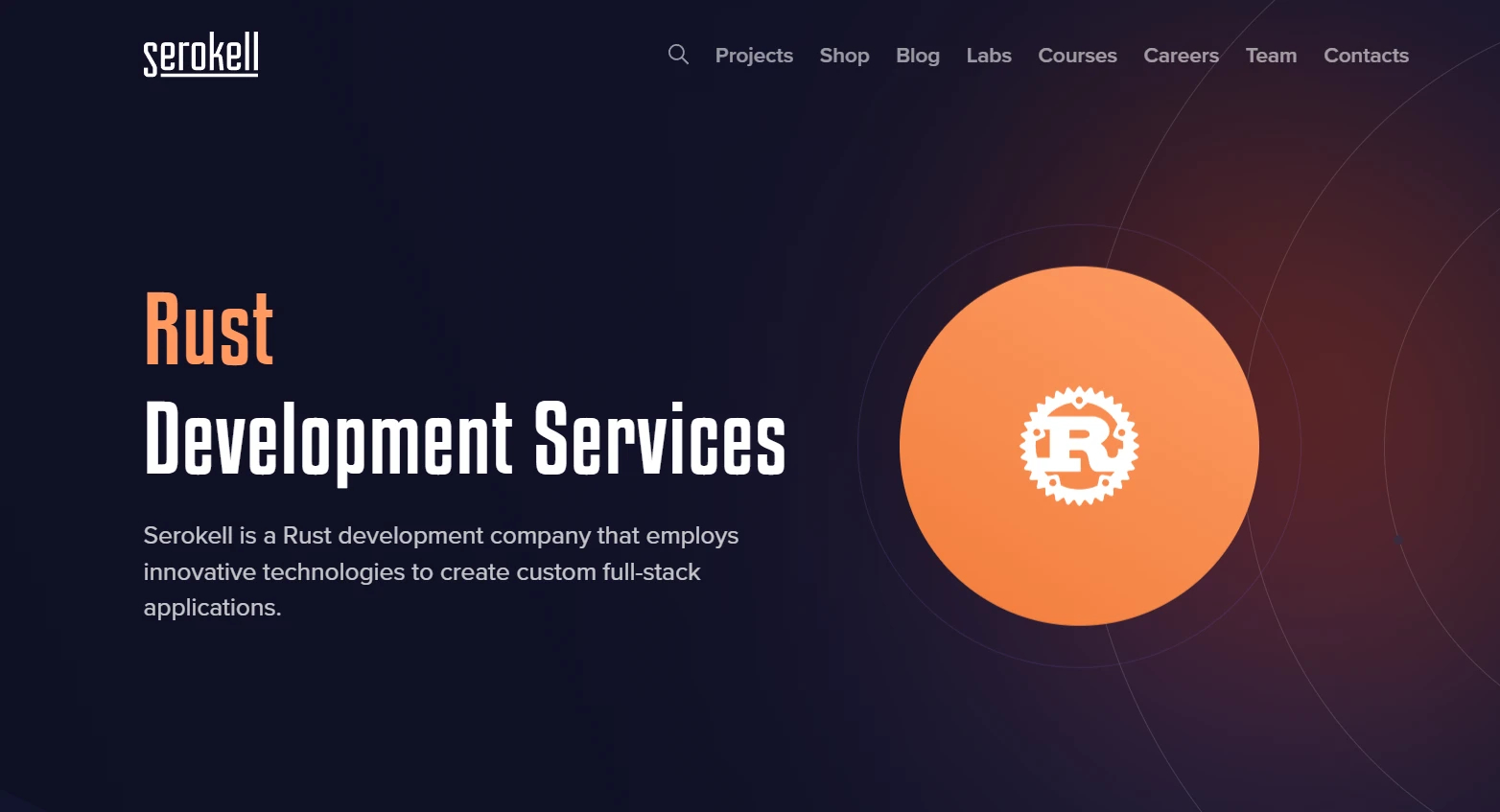 Serokell is a somewhat more specialized player. They are known for:
Serokell is a somewhat more specialized player. They are known for:
- Strong emphasis on systems, formal methods, reliability, and open source.
- Using Rust (along with Haskell, Nix) for parts of their engineering, especially where safety, correctness, and performance matter.
- Working in FinTech, Biotech, Blockchain domains. Projects that demand correctness and safety tend to choose Serokell.
While they may not always have gigantic revenue footprints compared to large offshore or full-stack companies, their technical reputation is high and they are often chosen for high-risk, high-safety, or critical systems.
4. Andersen
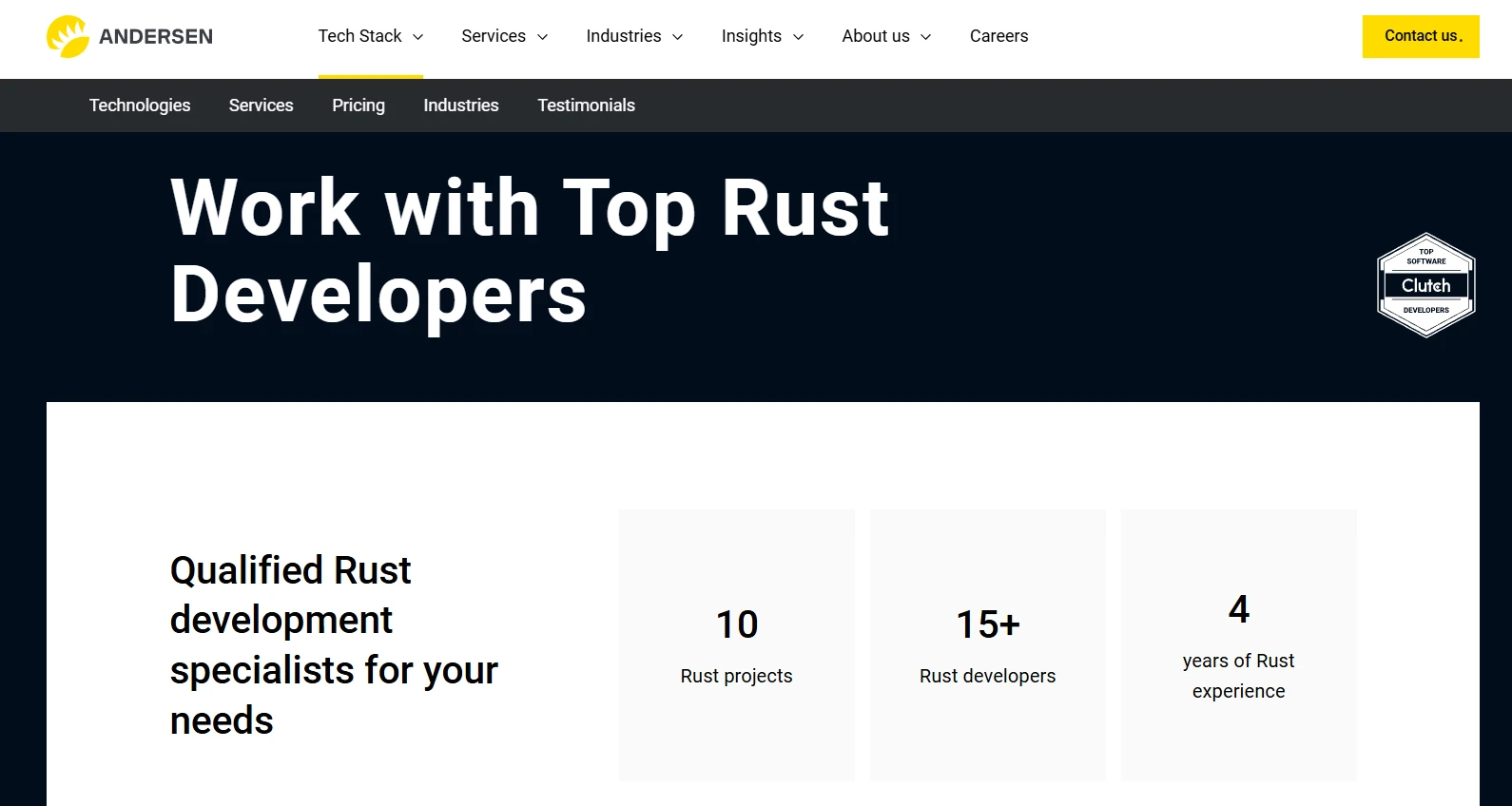
Andersen (often referred as AndersenLab) is a big name in outsourcing / custom software development, and has a strong presence among firms offering Rust services. Their strengths include:
- Experience delivering IT tools for large enterprises (FinTech, Logistics, Healthcare etc.) using Rust in backend or performance-critical parts.
- Certified personnel, skilled developers, and ability to scale with project demands.
They may not always specialize exclusively in Rust, but their scale, reputation, and multidisciplinary capacity give them an edge.
Other Noteworthy Companies
Several others are making waves in the global Rust market in 2025:
- Peiko — Known for blockchain & web services with Rust.
- WebClues Infotech — Offers performance optimization, cross-platform Rust work, small to mid-size projects.
- Qubit Labs — Good reputation especially for staffing, remote teams, and embedded / backend systems built using Rust.
Trends & Market Drivers
To understand leadership, it helps to know what is driving the global market for Rust development. Some of the key trends:
- Memory safety, performance, and concurrency: Rust’s ownership model makes it easier to avoid bugs such as use-after-free, buffer overflows etc. In many industries (IoT, embedded, security, fintech), these guarantees are very attractive.
- Security and regulatory pressure: Companies are facing stricter requirements for software security (e.g. in automotive, aerospace, medical, defense). Rust’s zero-cost abstractions and safety helps.
- Embedded & IoT growth: As devices proliferate, the need for safe, small, efficient code rises. Rust is increasingly used for firmware, embedded systems, constrained devices.
- Cloud, backend, WebAssembly expansion: Rust is being used more for server-side work, microservices, cloud functions, WebAssembly for performance in web or mobile UIs.
- Legacy migration: Firms with large C/C++ codebases are exploring Rust to gain safety without completely rewriting everything immediately.
Who’s Leading, and Why
Putting together strength of offerings, technical reputation, domain experience, and ability to scale, here’s a summary of who seems to lead in 2025:
|
Leader |
What Gives Them Edge |
| Yalantis | Strong embedded & IoT Rust work; legacy migrations; structured Rust group; full service from firmware to backend. |
| Innowise | Wide range of Rust services; ability to deploy dedicated teams; strong in cloud, blockchain, backend. |
| Serokell | Reputation for reliability, correctness; good for safety-critical, high verifiability work. |
| Andersen & Similar Large Providers | Scale, enterprise experience, ability to meet demanding clients. |
| Specialist / Niche Firms (Peiko, WebClues, Qubit Labs) | In depth expertise in particular areas—blockchain, embedded, performance, etc. |
Challenge Areas & Risks
Leading isn’t risk-free. Some of the challenges companies face:
- Talent scarcity: Rust is still newer than C/C++/Java, so finding experienced developers (especially for embedded/Rust + safety) can be hard. The Rust development team you assemble may be great, but hiring them can be slower and more costly.
- Ecosystem maturity: While many libraries and tools are now stable, some parts of embedded or hardware targeting are still catching up or require careful engineering.
- Cost vs legacy inertia: Convincing clients to switch from mature C/C++/other stacks comes with risk, cost, and sometimes a steep learning curve.
- Certification and compliance: In safety-critical industries, standards like ASIL, DO-178, etc., may not yet fully recognize Rust or require specific toolchains; proof of compliance can be a barrier.
Conclusion
In 2025, the global Rust development market is being led by firms that combine deep technical work in embedded and safety-critical contexts with the ability to scale and serve enterprise needs. If your project demands performance, reliability, memory safety, and growing complexity, these are the players to watch or to partner with.

